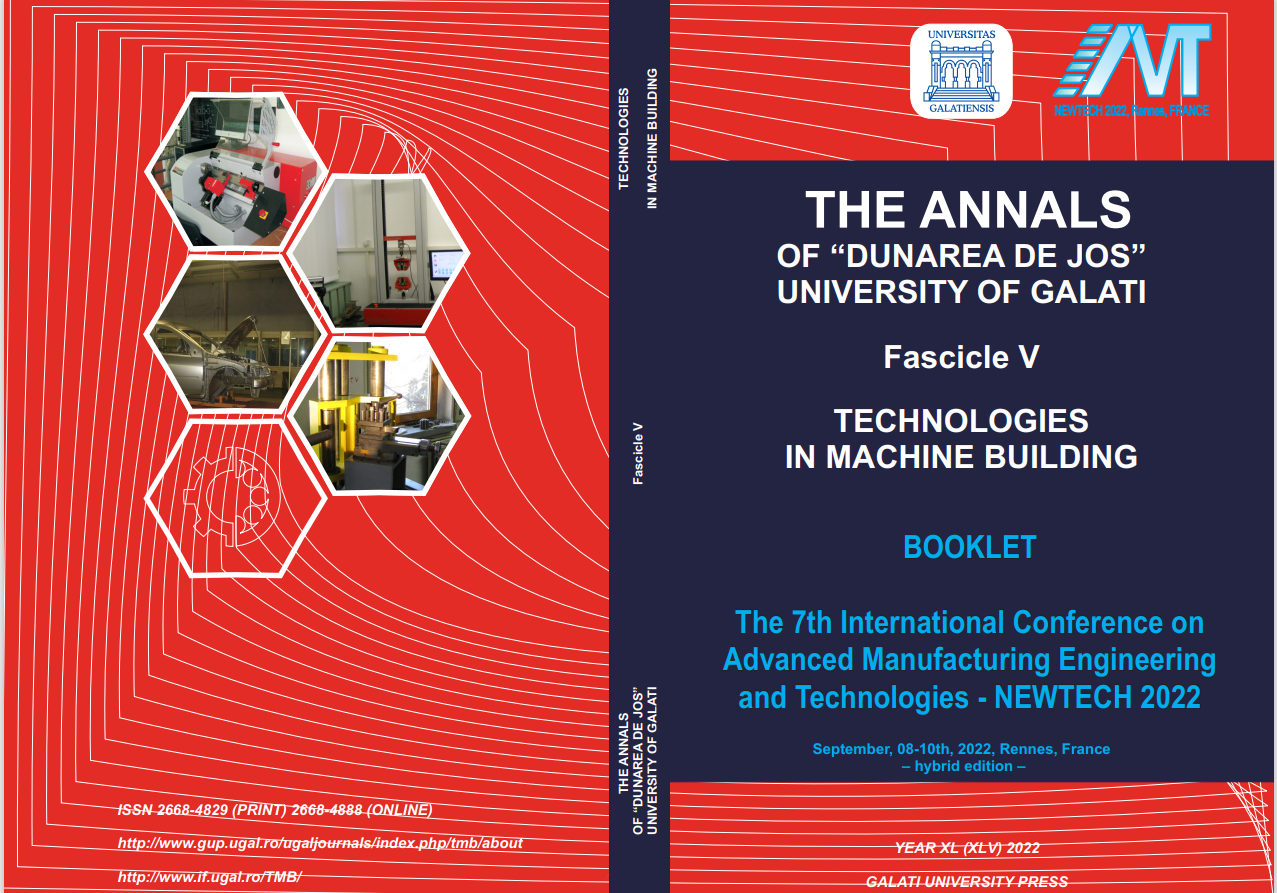Machinability optimization of dry CNC turning of UNIMAX® tool steel in annealed and hardened states by implementing swarm intelligence algorithms
Abstract
In this research work, the machinability of a special tool steel (UNIMAX® by Uddeholm,
Sweden) under dry CNC turning is investigated. The working material was investigated under two
states; annealed and hardened. As major machinability indicators, main cutting force Fz (N) and mean
surface roughness Ra (μm) were selected and examined under different values for the cutting
conditions; cutting speed, feed rate, and depth of cut. A systematic design of experiments was
established as per the Response Surface Methodology (RSM). The experimental design involved
twenty base runs with eight cube points, four center points in the cube, six axial points and two center
points in axial direction. Statistical analysis to examine the effect of cutting conditions on the
responses of main cut-ting force and surface roughness included analysis of variance (ANOVA) and
contour plots under the scope of studying the interaction effects among process parameters and
generating a full quadratic model for predicting the two responses. To assess the significance of
models in predicting the responses of main cutting force and surface roughness standard statistical
indices were examined such as F and P values, whilst Anderson–Darling normality test was conducted
to verify the suitability of the models corresponding to the main cutting force and surface roughness,
for practical applications. The two regression models served as the fitness functions and were
iteratively evaluated by three swarm-based intelligent algorithms namely Grey-wolf optimization
algorithm, Multiverse optimization algorithm and Ant-lion optimization algorithm, for optimizing
main cutting force and surface roughness. The results obtained have shown that all algorithms were
capable of producing robust Pare-to fronts of non-dominated optimal solutions, yet with some
differences in their quality from the perspective of coverage of the solution domain.


